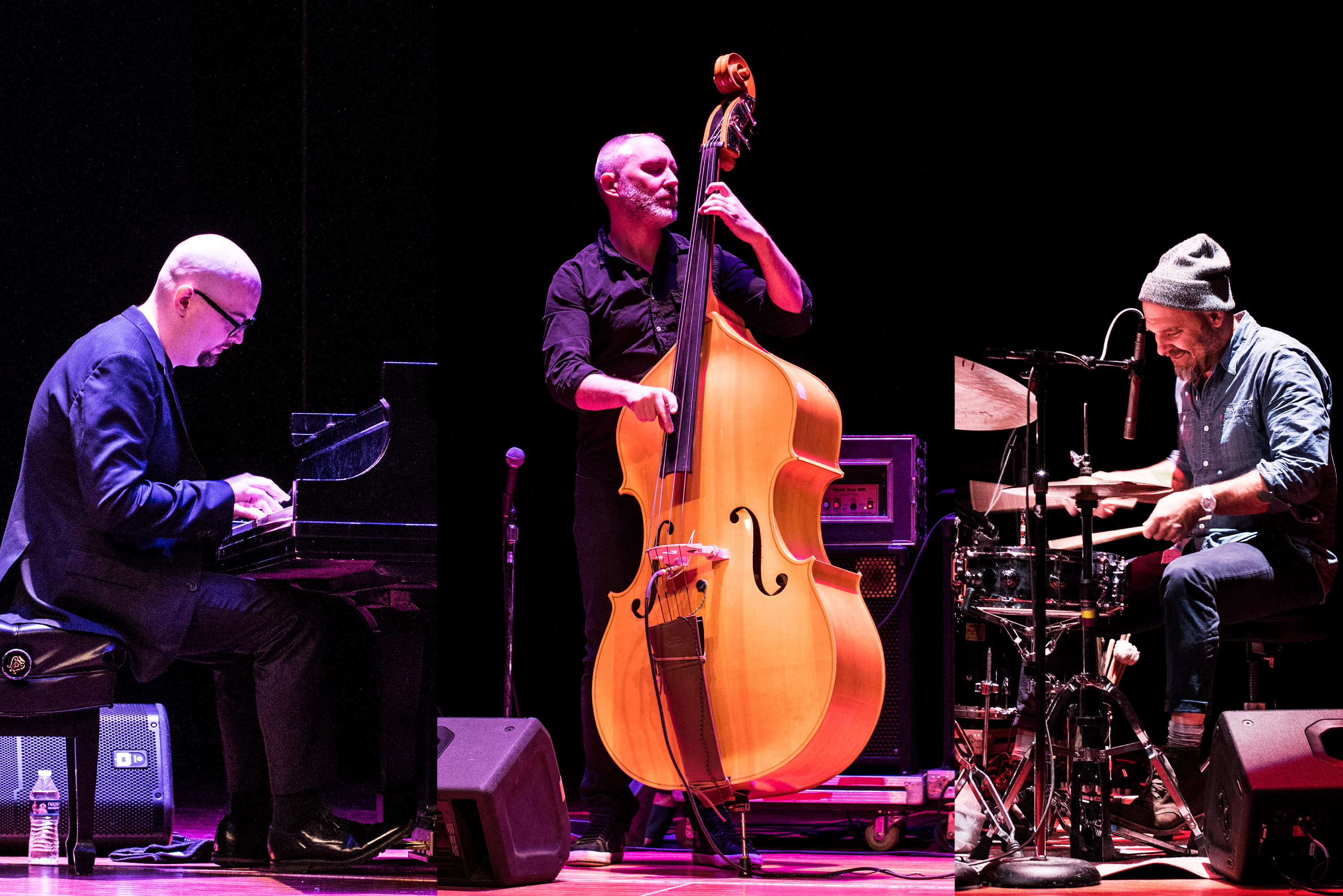A&E
The Bad Plus: bewildering modern sound-art
By Haley Lynch ’17
February 23, 2017
Tags a+e
Last Friday night, Feb. 17, The Bad Plus performed in Wellin Hall. Hailing from Minneapolis, this trio plays a dazzlingly complex style of avant-garde jazz that combines some elements of pop and rock into dense harmonies and writhing rhythms. They performed a combination of original compositions and imaginative covers of hits from other genres. Bassist Reid Anderson introduced the band man by man, and a short clip of personal theme-music, always playfully initiated by drummer David King, followed each name. The band’s sense of intimacy with one another was obvious from the get-go, evidenced both in their comfortable interactions with each other onstage and by their cohesion throughout an extraordinarily challenging set.
The Bad Plus’ main appeal to an audience unfamiliar with their style may be their singular knack for arranging songs made famous by other artists in other genres. Their covers distort and manipulate chordal information and melodies almost past the point of recognition. Perhaps the most striking example was their arrangement of Cyndi Lauper’s “Time After Time,” recently released on their new album It’s Hard (2016). On the title of the album, Anderson commented dryly, “It’s named that because it really is. Hard.”
Their arrangement of the classic tune inserts a more prominent drum line with airier snare. The melody is featured on frank piano and supported by steadily rising bass lines that plod towards increased complexity as the song progresses. Pianist Ethan Iverson plucked a minimalist solo full of tasty blues influenced note choices that later evolved into harsher dissonances. Other songs included from that 2016 albums further demonstrated the group’s slightly tongue-in-cheek sense of a certain deference to the musicians and styles that have come before them. They included covers ranging in diversity from Barry Manilow’s “Mandy” to the 1970’s German electronic group Kraftwerk’s composition “The Robots.” Their ability to create a relatively conformed sound and recognizable style out of each of these almost impossibly diverse choices recommends the band’s interest in developing a more modernized understanding of tonality and meters.
Many of their original compositions, lacking that same preliminary sense of familiarity that helps ground the listener, can feel even harder to make sense of. Nonetheless, tunes like King’s “Gold Prisms Incorporated” (from their 2014 album entitled Inevitable Western) starts out with a rock beat and familiar chordal patterns that give the audience a chance to groove before the band starts to really break down again. Anderson gained the audience’s confidence with his charmingly awkward story about the song as “particularly relevant… lately. Because it’s about having offshore banks accounts.” He jokingly encouraged the audience to join the corporate branch of The Bad Plus in employing this money-saving tax evasion tactic, too. Iverson’s knotted tune “Self Serve” from the same album is constructed of ultra-funky patterned lines with strong bop influences.
King’s drumming was perhaps the highlight of the night; it is certainly the most unique element of the group’s sound. His shimmering quick, almost extra-rhythmic tattoos swath the stage in sensational patterns that expertly disguise the beat from a slightly bewildered audience. King’s virtuosity is evident in his delicate, almost mechanistic touch, but his playing is never without a certain sense of humor. Just when the audience feels like they’re being tricked by the three men on stage—maybe they don’t even know where they are, we begin to speculate—King and his band members suddenly do sink into a groove. All of a sudden The Bad Plus is dragging the audience along deep in the pocket of a beefy funk. There is never a moment, no matter how far the beat seems to run out from their feet, when those musicians don’t know exactly where they are.
The sneakiest thing about Friday night’s set—and The Bad Plus’ music in general—is the group’s habit of composing relatively simple, pop-sounding melodies over maddeningly intricate harmonies and shifting rhythmic structures, which means that in spite of all the information coming into our ears at once, those of us so inclined are still left with a little diddy to whistle. Alternatively contemplative and cooking, The Bad Plus’ set presented an enjoyable if somewhat overwhelming take on modern jazz.





